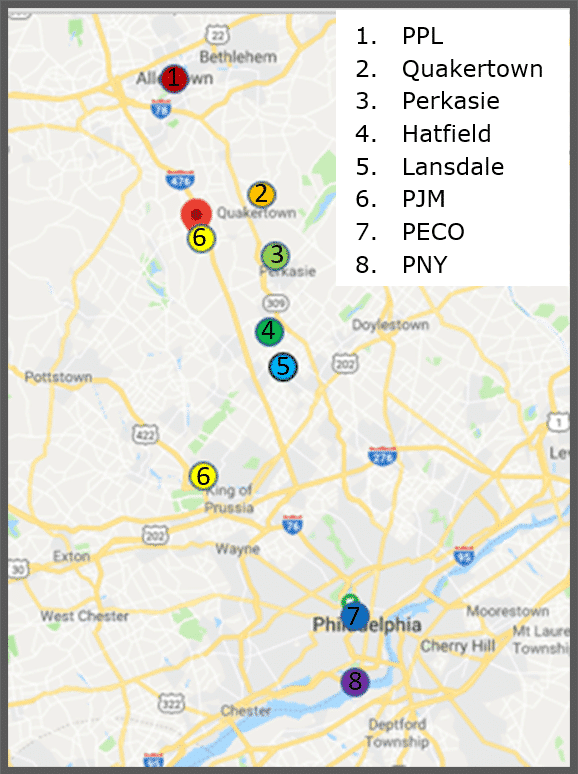The Energy Transition Is Here
We are living in unprecedented times. Now imagine a widespread power outage.
Electrical and other critical infrastructure allows us to stay connected with each other and to maintain a civilized existence. As society continues to evolve and grow, the demand for that connectedness is accelerating with it. Hybrid workers, EV’s, and distributed and renewable energy are just some of the key drivers effecting an energy transition.
Today we have large regional markets connected to large centrally located generation and transmission systems. Under normal circumstances the loss or disruption of any one of these systems can have cascading regional effects. In the midst of a pandemic or other adverse event, such a loss is potentially catastrophic. It is clearer than ever that we need to get serious about community resilience and sustainability. Making the necessary improvements will amount to transitioning away from an old, centralized model to something new. But what does that look like?
The Future Electric Grid
ProtoGen believes the future electric grid will be characterized by decentralized and transactive energy platforms. These platforms will host distributed and renewable energy generation and storage assets and create economic opportunity and growth at the community level while driving steady, incremental investment toward a more resilient and sustainable configuration. Put another way, distributed energy needs distributed markets.
One key challenge facing a transition is the typically glacial pace of change in the energy industry. A negotiation must be had to align the technical, regulatory and economic attributes of infrastructure with those of energy stakeholders, and that negotiation will impact millions of stakeholders. Another challenge is that the energy transformation will ultimately happen concurrently with growing penetration of distributed energy resources (DER) and the electrification of transportation, buildings, and industry. Disruptions to these complex and vital system could lead directly to loss of life and economic value. For these reasons, it is critical that the transition proceed from a strong, secure framework that maximizes the economic and societal benefits, and provides all-hazard resilience, especially against natural disaster or bad actors.
A good place to start would be a pilot or scaled demonstration conducted as part of a broader planning and adoption effort. Given the size (and speed) of the fundamental change needed in energy, the pilot would ideally represent a logistically significant scale such as a regional chain of microgrids. Such a scale would have the dual effect of producing the strongest and most resilient electrical configuration possible and forcing stakeholders to reapply fundamental understandings in new ways. Once piloted regionally, this first platform could become the basis for new research and rulemaking, allowing it to be scaled and adapted to other US regions.
Kicking off the Energy Transition
ProtoGen has envisioned developing such a regional pilot in Southeastern PA. The work would include four municipal utilities (Quakertown, Perkasie, Hatfield, Lansdale), a private utility (PIDC in the Philadelphia Navy Yard), the surrounding investor-owned distribution utilities (PECO and PPL), and PJM (whose primary and reserve control facilities are in King of Prussia and Milford, respectively). Together, these points trace a significant transportation corridor that is home to some 3.5 million people as well as the control facilities for the world’s largest energy market. Notably, municipal and private utilities are not subject to PUC regulation and therefore have a significantly greater degree of independence and regulatory flexibility to pursue grid modernization strategies. This unique set of circumstances could be leveraged to create a hub of smart and connected microgrids aligned with regional transportation, banking, manufacturing, government operations, etc.
To that end, we have completed or are currently engaged in efforts that include project development (microgrids and renewable/distributed energy projects), real-time weather forecasting, stakeholder process, program management, workforce development and more.
Community members of all types have a stake in this vision becoming reality. It’s widely understood that the frequency of adverse events – be they natural or man-made – is likely to increase over time. In light of this, and the lack of a timely and coherent federal response to our current pandemic, communities cannot leave resilience to chance. We should seize on this time of global focus and reflection to prepare for the future we want.
We welcome the opportunity to discuss this idea, energy transition more broadly, or any other energy-related topic further with anyone. Please feel free to reach out directly!


